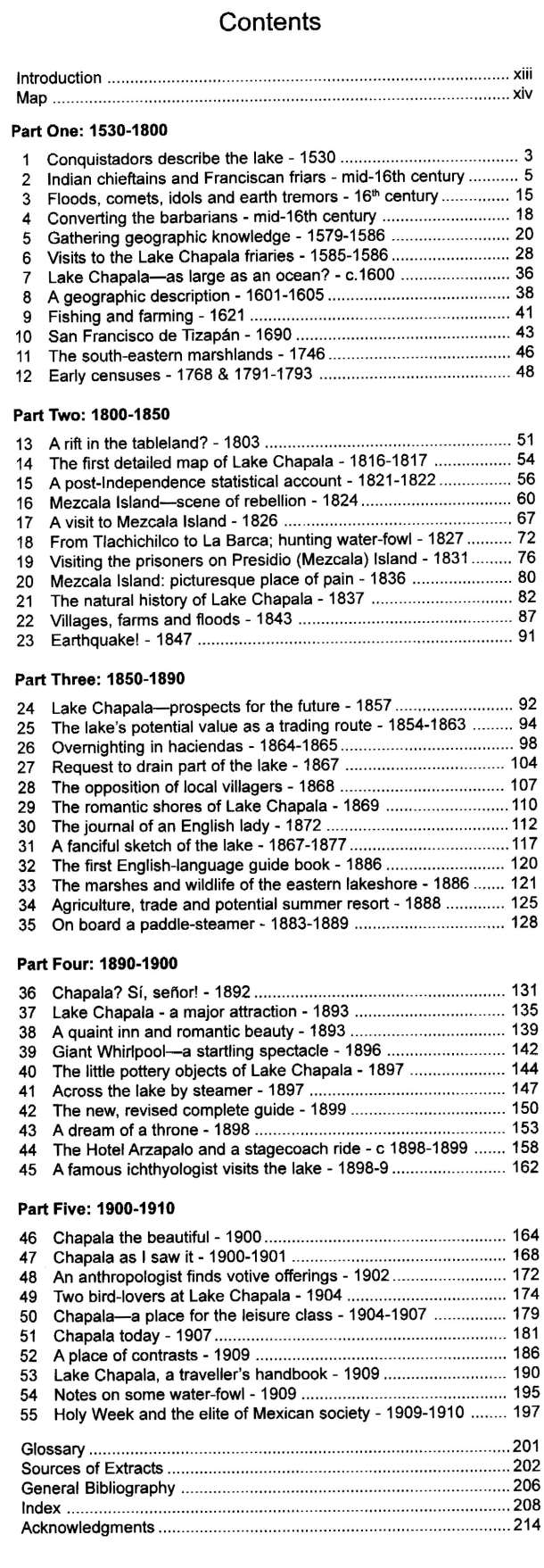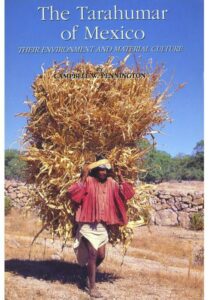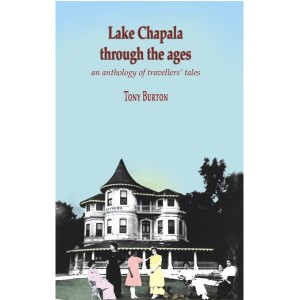“A giant walked around and the ground cracked” (a Tarahumar legend explaining how the canyons were formed).
Mexico’s Copper Canyon is narrower, deeper and longer than the US Grand Canyon. The train ride from Los Mochis and El Fuerte to Divisadero, Creel and Chihuahua traverses the Western Sierra Madre with its imposing peaks and pine forests. This area is home to Mexico’s Tarahumar Indians, an indigenous group whose distinctive lifestyle has, thankfully, resisted many of the supposed allures of modern living.
This partial bibliography offers a varied selection of reading, both fiction and non-fiction, directly related to the Copper Canyon region and the Tarahumar people.
Alvarado, C.M. (1996) La Tarahumara: una tierra herida. Gobierno del Estado de Chihuahua. Somewhat repetitive academic analysis of the violence of the drug-producing zones in the state of Chihuahua, based in part on interviews with convicted felons.
Bennett, W. and Zingg, R. (1935) The Tarahumara. Univ. of Chicago Press. Reprinted by Rio Grande Press, 1976. Classic anthropological work.
Dunne, P.M. (1948) Early Jesuit Missions in Tarahumara. Univ. Calif. Press.
Fisher, R.D. (1988) National Parks of Northwest Mexico II. Sunracer Publications, Tucson, Arizona. Fisher is the author of numerous well illustrated works about the Canyon region.
Fontana, B.L. (1979) Where night is the day of the moon. Northland Press, Flagstaff, Arizona. Very colorful and interesting.
Gajdusek, D.C. (1953) “The Sierra Tarahumara” in Geographical Review, New York. 43: 15-38
Johnson, P.W. (1965) A Field Guide to the Gems and Minerals of Mexico. Gembooks, Mentone, California.
Kennedy, J.G. (1978) Tarahumara of the Sierra Madre; Beer, Ecology and Social Organization, AHM Publishing Corp, Arlington Heights, Illinois. Republished, as The Tarahumara of the Sierra Madre: Survivors on the Canyon’s Edge in 1996. – interesting account by an anthropologist who lived in one of the more remote Tarahumar areas for several months, accompanied by his wife and infant daughter. Kennedy also co-authored with Raul A. Lopez Semana Santa in the Sierra Tarahumara. A comparitive study in three communities. Museum of Cultural History, UCLA.
Kerr, J.L (1968) Destination Topolobampo: The Kansas City, Mexico and Orient Railroad, Golden West Books, San Marino, California. Difficult to find account of the railroad itself.
Lartigue, F. (1970) Indios y bosques. Políticas forestales y comunales en la Sierra Tarahumara. Edicions de la Casa Chata # 19, Mexico.
Lumholtz, C. (1902) Unknown Mexico. 2 volumes. Scribner’s Sons, New York. Republished in both English and Spanish. Fascinating ethnographic account from the last century.
Merrill, W.L. (1988) Raramuri Souls – Knowledge and Social Progress in North Mexico. Smithsonian Institution, Washington D.C.
Nauman, T. (1997) “Tala ilegal para la siembra de mariguana y opio en Chihuahua” p. 50 in El Financiero, May 12, 1997. Describes the Arareko project.
Norman, James (1976) “The Tarahumaras: Mexico’s Long Distance Runners” in National Geographic, May 1976. pp 702-718
Pennington, C. (1963) The Tarahumar of Mexico, their environment and material culture. Univ. of Utah Press. Reprinted by Editorial Agata, Guadalajara, 1996. Another classic account of Tarahumar life and culture. The reprint has additional color photographs, taken by Luis Verplancken, S.J., who has run the mission in Creel for many years.
Plancarte, F. (1954) El problema indígena tarahumara. INI. Mexico. Spanish language description published by National Indigenous Institute.
Robertson, T.A. (1964) A Southwestern Utopia. An American Colony in Mexico. Ward Ritchie, Los Angeles. This describes the early history of Los Mochis and surrounding area.
Roca, P.M. (1979) Spanish Jesuit Churches in Mexico’s Tarahumara. Univ. of Arizona.
Salopek, Paul (1996) “Sierra Madre – Backbone of the Frontier” in National Geographic, August 1996.
Schmidt, R.H. (1973) A Geographical Survey of Chihuahua, monograph #37 Texas Western Press.
Shepherd, G. (1938) The Silver Magnet. E.P.Dutton, New York. The story of Batopilas mining town.
Shoumatoff, A. (1995) “The Hero of the Sierra Madre” pp 90 – 99 of Utne Reader (July-August, 1995), reprinted from Outside (March 1995). An account of the determined efforts by Edwin Bustillos to prevent further environmental destruction in the Copper Canyon region.
Spicer, E. (1969) “Northwest Mexico: Introduction” in Handbook of Middle American Indians vol.8, Ethnology part II. Univ. of Texas Press.
Vatant, Francoise. La explotación forestal y la producción doméstica tarahumara. Un estudio de caso: Cusárare, 1975-1976. INAH, Mexico.
Villaseñor, Victor (1992) Rain of gold. Delta. A Mexican-American novel based on family tale of dreams, mines and wealth and Revolution.


